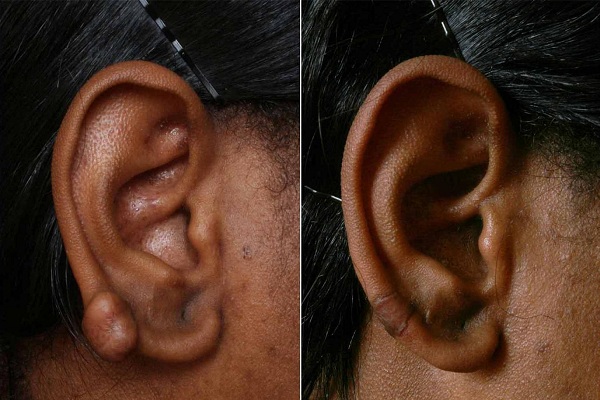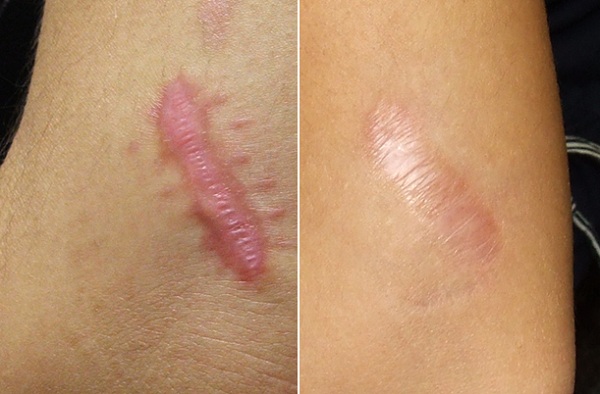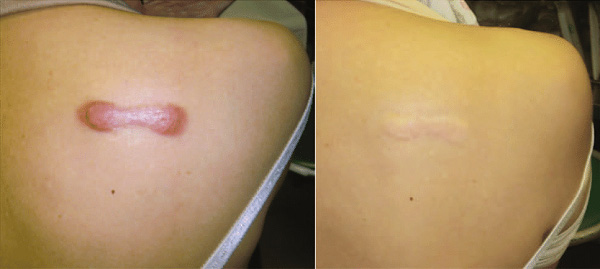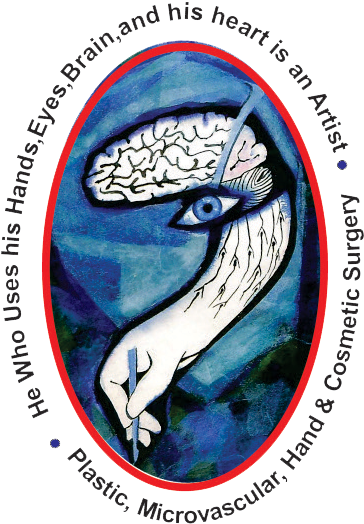Keloid Scars
When skin is injured, fibrous tissue called scar tissue forms over the wound to repair and protect the injury. In some cases, extra scar tissue grows, forming smooth, hard growths called keloids.

Keloid symptoms
Keloids come from the overgrowth of scar tissue. Keloid scars tend to be larger than the original wound itself. They may take weeks or months to develop fully.
The symptoms of a keloid can include:
- a localized area that is flesh-colored, pink, or red
- a lumpy or ridged area of skin that’s usually raised
- an area that continues to grow larger with scar tissue over time
- an itchy patch of skin
While keloid scars may be itchy, they’re usually not harmful to your health. You may experience discomfort, tenderness, or possible irritation from your clothing or other forms of friction. Keloid scarring can form on large areas of your body, but this is generally rare. When it happens, the hardened, tight scar tissue may restrict movement.
Keloids are often more of a cosmetic concern than a health one. You may feel self-conscious if the keloid is very large or in a highly visible location, such as on an earlobe or the face.
Keloid causes
Most types of skin injury can contribute to keloid scarring. These include:
- acne scars
- burns
- chickenpox scars
- ear piercing
- scratches
- surgical incision sites
- vaccination sites
An estimated 10 percent of people experience keloid scarring. Men and women are equally likely to have keloid scars. People with darker skin tones are more prone to keloids.
Keloids surgery
In the case of very large keloids or an older keloid scar, surgical removal may be recommended. The rate of return for keloid scarring after surgery can be high. However, the benefits of removing a large keloid may outweigh the risk of postsurgery scars.
Cryosurgery is perhaps the most effective type of surgery for keloids. Also called cryotherapy, the process works by essentially “freezing” away the keloid with liquid nitrogen.
Your doctor may also recommend corticosteroid injections after surgery to reduce inflammation and lower the risk of the keloid returning.
Questions? We got Answers!
Hypertrophic scars are thick, raised scars that develop in the area where the skin is injured. Scars are normal during the human body’s healing process, but a hypertrophic scar is the result of an abnormal response to skin injury. The body produces too much collagen, so the scar grows larger than a normal scar.
Keloid scars and hypertrophic scars are very similar to each other, but the main difference is that hypertrophic scars do not grow beyond the site of the original injury. Keloids do continue to grow beyond the original injury site.
No. They are benign, and not contagious.
After the skin has been injured a scar is formed. The body produces excess collagen and connective tissues that extend beyond the original damaged area. They can grow to unsightly proportions.
These scars appear in about 5-15% of the world’s population, equally affecting men and women. Although those with darker skin are more likely to develop keloids, they can appear on anyone regardless of skin type. It’s possible that due to higher melanocyte concentration in the skin, that’s why African, Hispanic, and Asian populations experience a higher frequency of keloids. It’s also possible that there is some degree of genetic predisposition to the formation of keloid scars.
While there are common causes such as injury and piercing, the medical world does not fully understand why some people are more prone to their development than others. It’s not possible to predict whether one injury or another will grow a new scar. The best option to avoid them is to avoid injury to the skin.
Keloid scars can be treated through: steroid injections, pulse dye laser procedures, surgical removal and cryotherapy
Pulsed dye lasers can be used to suppress or even destroy specialized cells called fibroblasts. They are responsible for producing collagen fibers that form the keloid scars.





